The 15th F-35B for the UK, ZM149, has flown from Lockheed Martin’s Fort Worth facility for a test flight.
Numbers right now are exactly where they’re expected to be and inline with the 2015 Strategic Defence and Security Review.
2 F-35B in LRIP run 3, 1 F-35B in LRIP run 4, 1 F-35B in LRIP run 7, 4 F-35B in LRIP run 8, 6 F-35B in LRIP run 9, 3 F-35B in LRIP run 10, 2 F-35B in LRIP run 11, 2 F-35B in LRIP run 12
6 F-35B in LRIP run 13, 8 F-35B in LRIP run 14 and 7 F-35B in LRIP run 15. This brings us to 42 in 2023.
The next run brings us to the total of the first batch of aircraft, 48.
It is hoped that 138 F-35 aircraft will have been delivered by the 2030s. Around 2023, the Ministry of Defence have indicated that the UK will have 42 F-35 aircraft with 24 available as ‘front-line fighters’ and the remaining 18 will be used for training (at least 4-5 on the OCU), be in reserve or in maintenance.
As the only level one partner on the F-35 programme, the UK has been working closely with the US from the outset. UK industry will provide approximately 15% by value of each F-35 to be built, which are due to total more than 3000 in number. The programme has already generated $12.9Bn worth of orders for the UK and at peak production the programme will support over 24,000 jobs in the UK.
Run up to jets on-board
HMS Queen Elizabeth is expected to start fixed-wing flight trials with three or more F-35Bs off the eastern coast of the US around September this year. A fantastic info-graphic created by SaveTheRoyalNavy can be found here and details the timeline of the programme.
In order to prepare for operating from HMS Queen Elizabeth, Royal Navy sailors have also trained alongside their US Navy counterparts on the flight deck of the amphibious assault ship USS Wasp. Last year, the Royal Navy sent six Sailors to integrate into Wasp’s flight deck operations to prepare them for their upcoming Queen Elizabeth class aircraft carriers.
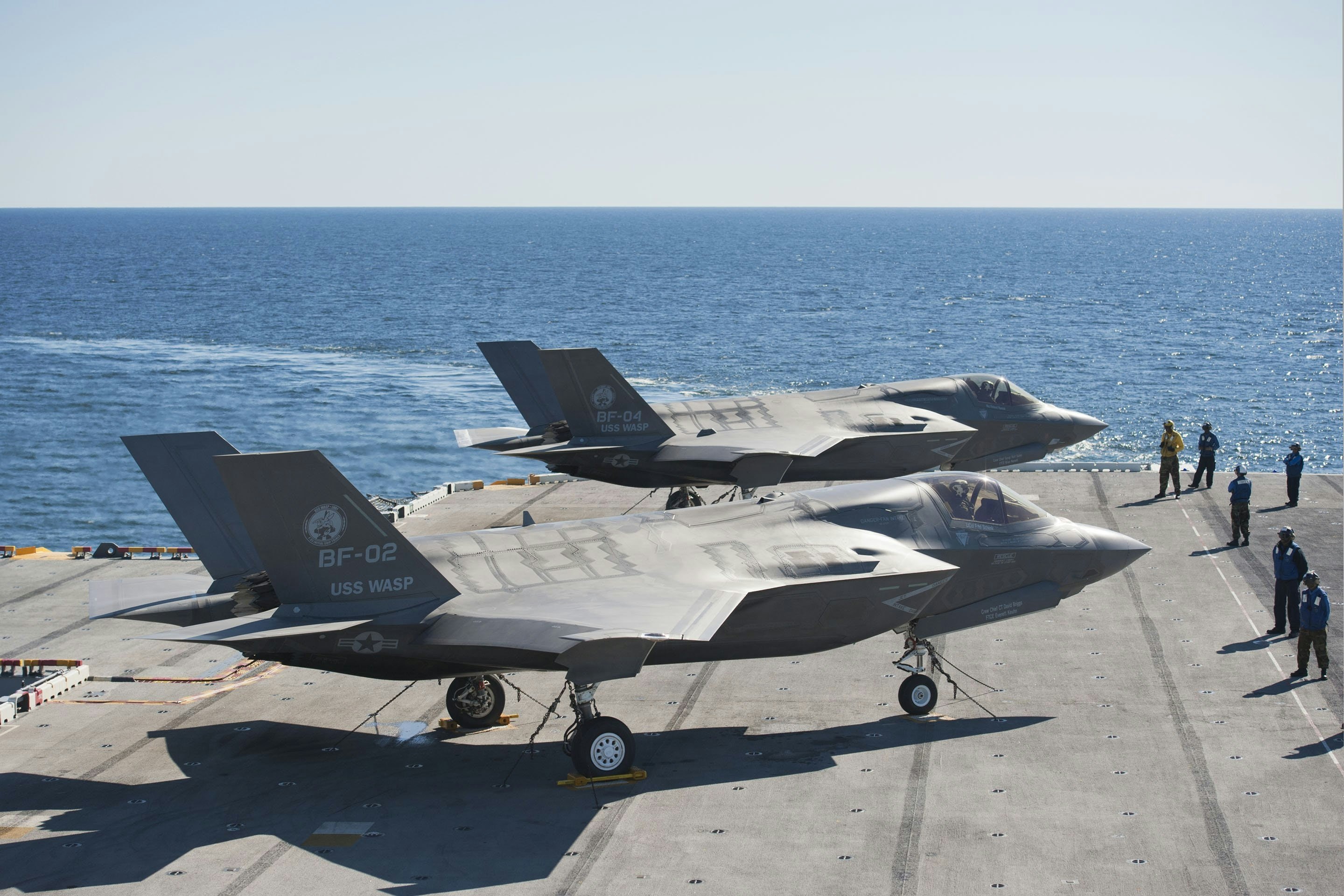
Royal Navy sailor Richard Clark said:
“Living with one another is good for integration, so when we work together, when we have your aircraft come to our flight decks, and vice versa, we’ll have a bit more awareness of how we each operate. It helps us work with you better on different platforms when we need to. This is the first group of guys who are not 1st Classes. Some of them have never been on a ship before, so for the younger guys, it’s good for them to get experience.”
Recent F-35 trials aboard the USS Wasp weren’t just an operational test for the United States Marine Corps, with much of the data produced being used to inform the USMC’s declaration of initial operating capability but also for the United Kingdom. UK personnel were fully embedded in the USS Wasp trials and will use the data gathered from this event, future trials and operational deployments to support the UK’s flying trials aboard HMS Queen Elizabeth off the US coast in Spring next year.
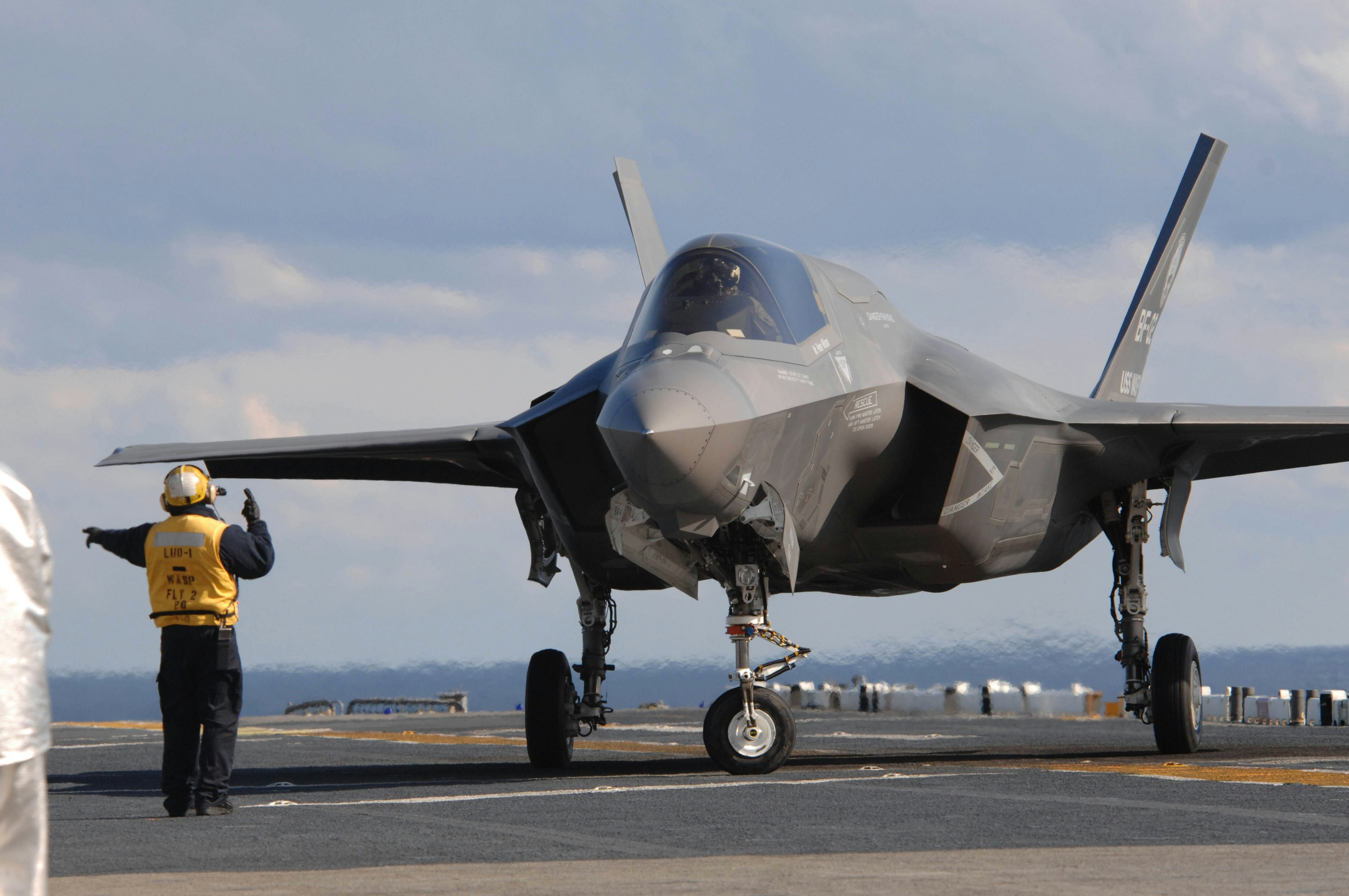
British F-35 pilots also recently embarked on the USS America for at-sea developmental testing phase 3 (known as DT), the last trial that paves the way for the US Marine Corps to deploy the jet operationally on amphibious assault ships. BAE Systems test pilot Pete Wilson said about the upcoming trials on the HMS Queen Elizabeth:
“This will not be a DT phase. Testing on the Queen Elizabeth will be like DTs 1, 2 and 3 combined. We don’t need to use fully instrumented aircraft; we already understand most of the loads on the aircraft systems, as we have tested that during earlier tests.”
HMS Prince of Wales will take over F-35 trials to allow HMS Queen Elizabeth to return to dock for her routine re-certification work.
Former Captain of the vessel Ian Groom told media that HMS Prince of Wales will need to be delivered during 2019 to allow flight trails to continue whilst Queen Elizabeth is undergoing inspection in dry dock. Quoted in Janes, Groom said:
“There is a further set of fixed-wing flying trials needed and HMS Prince of Wales has to carry them out. HMS Queen Elizabeth’s re-certification period in 2019 means we need HMS Prince of Wales then.”
What will the vessels carry when in operational service?
The term now used for the carriers embarked squadrons is ‘Carrier Air Wing’ (CVW). The vessels are capable of deploying a variety of aircraft in large numbers, up to a maximum in the upper fifties in surge conditions. Captain Jerry Kyd, commander of HMS Queen Elizabeth, commented on the initial deployment and the gradual increase in air wing numbers:
“We are constrained by the F-35 buy rate even though that was accelerated in SDSR in 2015, so initial operating capability numbers in 2020 are going to be very modest indeed. We will flesh it out with helicopters, and a lot depends on how many USMC F-35s come on our first deployment in 2021. But by 2023, we are committed to 24 UK jets onboard, and after that it’s too far away to say.”
In 2023, the UK will have 42 F-35 aircraft, with 24 being front-line fighters and the remaining 18 will be used for training (at least 5 on the OCU), be in reserve or in maintenance.
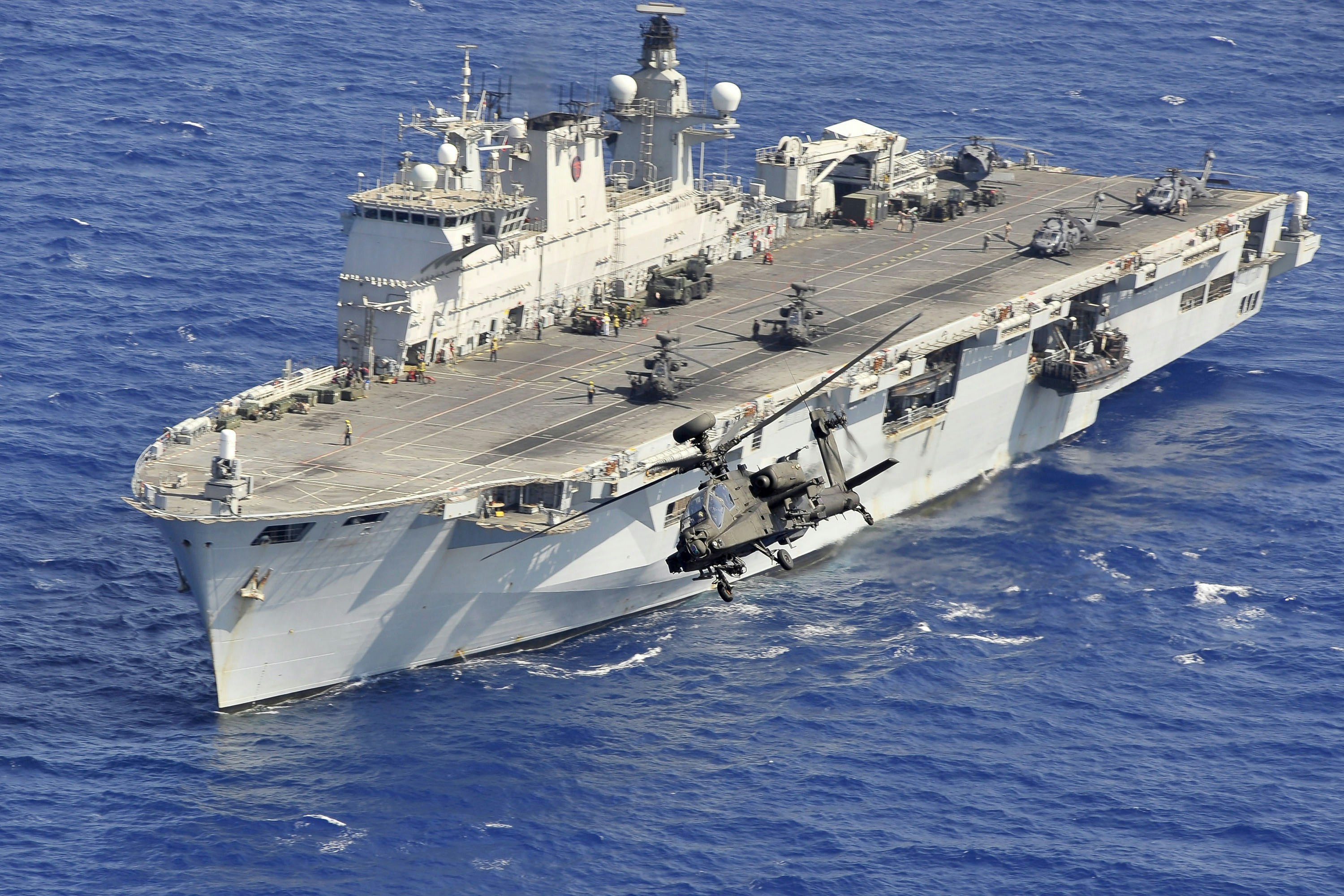
In addition to the joint force of Royal Air Force and Royal Navy F-35Bs and their pilots, the air wing is expected to be composed of a ‘Maritime Force Protection’ package of nine anti-submarine Merlin HM2 and four or five Merlin for airborne early warning; alternatively a ‘Littoral Manoeuvre’ package could include a mix of RAF Chinooks, Army Apaches, Merlin HC4 and Wildcat HM2.
The Crowsnest AEW&C aircraft will come from a number of the embarked Merlins (any of which can be fitted with the sensor package), the number again scaling with requirements.
We understand that vessel would still carry at least one F-35 squadron aboard in such circumstances to offer air defence as well as support to the helicopter assault activities.


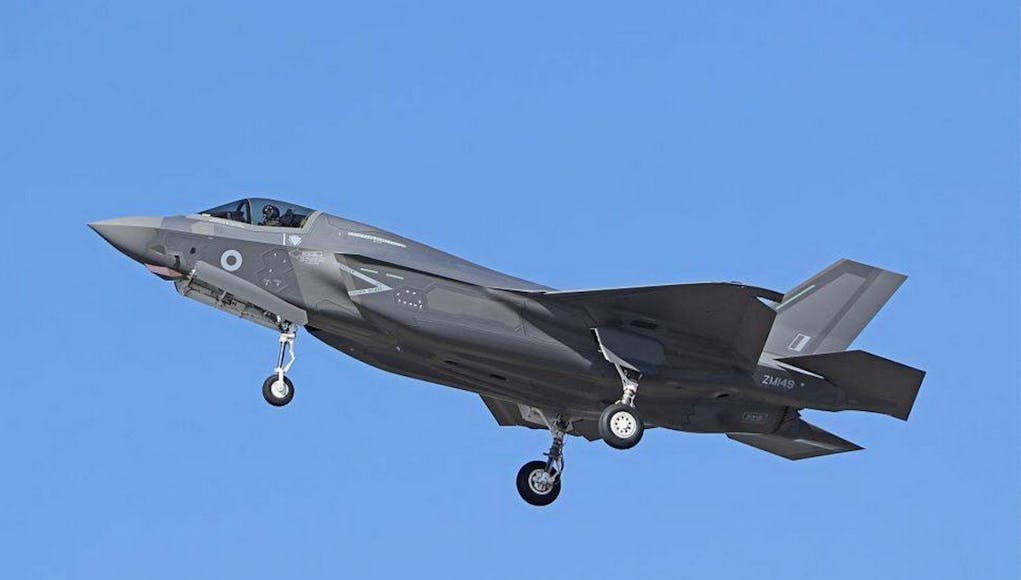

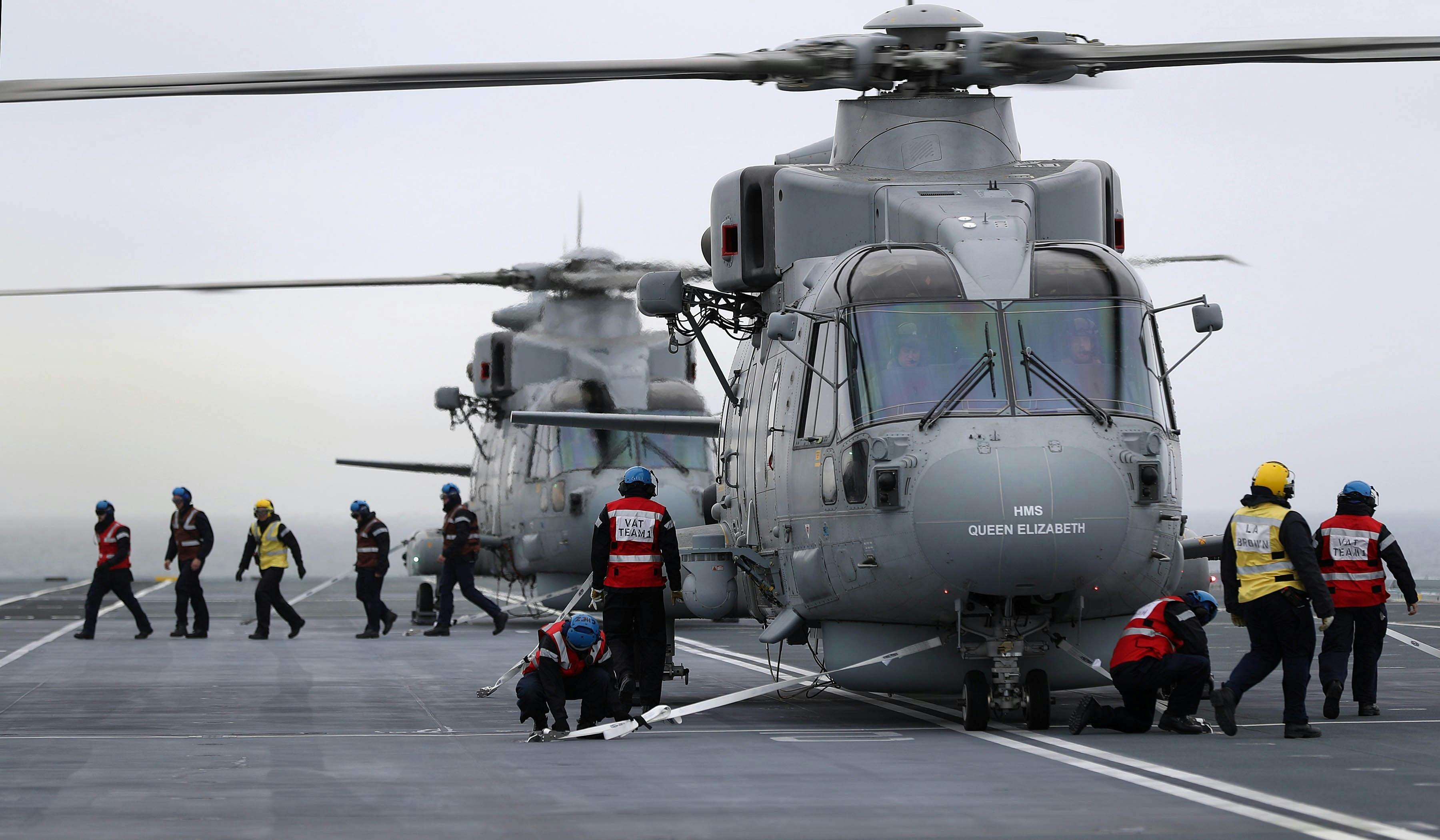

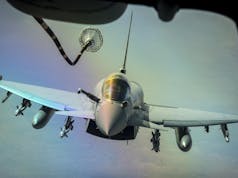









How many of the 15 are set to stay permanently in the US for testing purposes?
In other words, how many do we now have that will one day be operational?
I thought the first three or so didn’t have the right software for actual combat and were for training and development only. That would leave us a squadron of twelve. Might be wrong.
15th? fort worth/ they should be here in the u.k. not fort bloody worth
14 th f35b test flying in america? why are the other 13 not over here at 4-12 aircraft in a squadron, it all looks better
I think we’re going to get a way better end result keeping the early training and familiarisation in the USA rather than bringing it over here. OK, there would probably be some good publicity to be had from bringing the planes to the UK but that PR opportunity will still be there when they are brought over and for now would we rather our ground crews, pilots and other technical experts were learning their way around the aircraft and procedures right in the heart of things with immediate access to lots of USA resources and experts that are ahead of us in the learning curve or doing their learning in a little bubble of 10 or 12 aircraft back in the UK?
Personally I think that for once the UK is doing this the right way and all the other non-USA countries are doing it wrong (or at least less well than the UK).
I agree with what you said but it won’t be great PR when they turn up, it’ll be a disaster because people who don’t bother to do any research (which is the vast majority) will look at the nation’s who have had them for months and even a year abd just ask why were only getting them now.
i’m looking forward to seeing a picture of’ big lizzie’ with a full deck of fighters and other air wing assets on show.
Because they are training there! I have already tried to answer this in another article.
Perfectly explained above by Julian.
if they’re built and paid for they should be delivered, imagine buying a new car only to be told you won’t get to drive it for 12 months its not about being rude about people doing research lewis,or not, its about strategy and common sense.
nobody comes on here for petty insulting from ‘know alls’
Give it a little time. 617 squadron stands up at RAF Marham in the summer
what use is the other 14 sitting at fort worth? they should be here at marham. or bring forward flight testing trials for queen elizabeth, the sooner she gets her ‘birds’ the sooner the u.k will have its full carrier capability
i hope 617 will have aircraft to stand up with
no aircraft, no point.
Everything Julian says, plus RAF Marham’s not ready. F-35 prep works are scheduled to coincide with return later in the year.
Yes, 17(R) Squadron with 3 aircraft for test and evaluation to remain permanently in the US. 617 standing up this summer at Marham with 14 aircraft by the end of the year. Followed by 207 squadron to be the OCU at Marham formed in 2019.
google amarg inventory and see what is there in a state of preservation and possible reactivation shows where the uk could do some serious shopping.over 400 f 16’s and f13’s would no doubt regardless of the age, or systems fitted would be well accepted by the R.A.F AS TOO WOULD SEVERAL A 10’S.I WONDER WHAT WE COULD GET FOR THE£116 MILLION WE GOT FOR THE HARRIERS?
does anybody know whether ‘big lizzie’ has her phalanx actually fitted yet?
sorry, make that 12-24 in a squadron
great news – although I would like to see us place an order for 12 as an UOR, that is fantasy on my part.
Great news all round
shouldn’t they be in the u.k?
one thing I do find interesting about the F35 is why the c variant has 2 wheels on the front but the b variant only has one – I would have thought a STOVL would put more stress on the front landing gear than any other variant – but guess I am wrong.
Catapult and arrestor forces maybe??
Nose is pulled down by the catapult while the engines spin up.
And on landing once the tail hook hits the wire the back of the plane lands and slams the nose into the deck
Therefore most USN aircraft have some form modified front landing gear.
Cheers.
an aircraft hitting the deck when the ship is on the ‘uproll’ doubles the the stress on the airframe by some 40%, which is why naval airframes need to be developed to reduce this%
If you recall the was suppose to be a carrier version of the Sepecat Jaguar for the use by the French navy. This was cancelled in favour of the Super Etendard.
Whilst the land based Jaguar had one nose wheel the carrier version had two.
Stress and strain of carriers place a heavy burden on the undercarriage.
Thanks Everyone – just seems strange as I would have thought with vertical landings a double wheel at the front would be the way to go, but fascinating all the same
Shame there is no decal on the tail
There is an insignia on the tail. Look carefully. Due to low observability requirements it’s in shades of grey instead of red, white and blue, like the roundel.
Does it seriously make any difference? If the enemy is close enough to identify the colours then the F-35 is dead anyway because it’s not designed for close up dogfights.
Lewis – I fear we are blindly following the Americans on this. I agree the roundels and tail flash colours should be in ‘colour’. Interestingly there is a photo of a Tornado refuelling during an attack mission over Iraq right next to this column and its roundels are in ….colour!
There must handsome cost savings by keeping our F35s in the USA given that the USMC is accumulating a deep reservoir of knowledge with its B variant.
Ate you suggesting long term like the Luftwaffe has done with its Tornado fleet in New Mexico?
Why not if there are cost savings in doing so.
only level partner? we should get our aircraft before other foreign orders, tell’hank the yank’ our planes first or we reduce the order lost$ will get the americans in line.
RAF Maraham is not ready to take the F35B’s.
Drove past the airfield last week and the new area for the aircraft is still a building site
That is because they are not coming over until the end of the year.
“Stability is a priority and a necessity when landing on a naval carrier ship. While the robust landing gear takes care of the logistics of landing at a high capacity, the two wheels in the front of the aircraft provide stability, and absorb the shock of landing.”
https://www.lockheedmartin.com/us/news/features/2014/5-unique-f35c-carrier-variant-features.html
I still dream we could have bought some of the C variant. The UK may opt for the A/C in future though.
why would we opt for a ‘C’ without carrier equipped with cats & traps? Surely alternative to the ‘B’ will only be the ‘A’. Is the ‘C’ better in some way?
I think he means that the carriers where equipped cats and traps then we could have the C. Also I’ve heard that apparently some time in their service they will get them.
I was reading a link to an American defence site from here last night outlining all the issues the USA has with their arrestors on the new carriers and the push to return to the older (larger) system.
There are definitely benefits to cats and traps but clearly it’s not a simple bolt in.
F/F was 31st January 2018
Well the C uses the probe and drogue method, and yeah it has advantages with range and payload.
Ultimately it depends what it is used for, but there is a possibility it could compliment even in some numbers. From what we are told the F 35 will revolutionise how we fight wars, they are still working how to maximise how they operate and best tactics to employ.
But sure the smart money will be on the A model (Or variant of).. as the UK does not have the luxury to pick and choose on anything in this climate.
The A model is dependant on there being a friendly airfield close to the area of conflict, the B is’nt.
Hi Steve, But the STOVL (or maybe now STORL!) attributes of the B series come at a cost in performance – ie range and payload. The flexibility of a “jump-jet” has always come with that penalty. That’s why the RAF limited the buy of the Harrier (I & II) to three front-line squadrons, and invested in longer-ranged and more capable Tornados.
Based on past experience, most UK fast-jet combat operations will still take place from land bases – not aircraft carriers. So why hobble our strike-power with a variant that is less capable than others in the F-35 family?
The F-35 is shaping up to be an outstanding fighting machine.
I’m not arguing against F-35B for the QE class carrier, but many are now calling out the merits of a dual buy; essentially F-35A for the RAF, and F-35B for the FAA.
Is there a cost difference between the variants?
I have to say that the UK should stick with one variant (b) and come up with solutions to improve its range over time.
I would much prefer to have more F35b’s than less airframes due to mixing.
At the end of the day they are excellent aircraft and I am sure the UK can develop some form of drop away fuel tank that does not impact stealth.
I am also of the opinion that these will be used to “command” a set of drones (Taranis ) onto task and provide jamming and man in the loop deep penetration going forward at which point perhaps it has additional fuel tank internally.
We cannot have 2 versions of this aircraft it just costs too much – at worst we will have drop away tanks…
Hi Pacman, As always, you make some excellent points which I always enjoy reading.
In response, I would argue that we don’t know what the future is going to bring in terms of enhancements to the F-35B, or drone technology. (And an external fuel tank, even a stealthy one, does still come with a performance penalty – that’s why most aircraft have to carry two).
Perhaps the most straight-forward solution is simply to buy an aircraft (F-35A) that will have – for the foreseeable future – more range and hitting power.
I agree that running A & B variants in the fleet will be more expensive – but surely that additional cost can be justified through a significant increase in operational effectiveness.
Indeed, it isn’t so long ago that the UK fast-jet inventory comprised seven types (or sub-variants) – Tornado IDS, Tornado ADV, Phantom, Buccaneer, Jaguar, Harrier and Sea Harrier.
Surely we can be a little bit ambitious again, and stretch to just three types back in fast-jet fleet?
Surely if the A version is due to come down below £100 million and the B version costs £140-160 million, would the savings not negate the extra costs of running two types?
The only way to have fuel tanks not impact stealth is by putting them into the internal weapons bay which would mean sacrificing capability. There isn’t some miracle engineering solution here. We either get all F-35Bs which would save us a few pennies but would sacrifice capability and mean a good possibility of defeat in any conflict with peer enemies or we invest a little more and get the F-35A.
I’m also tired of supporters of the F-35B pointing out that it can operate from bombed out airfields. Two points. Firstly any enemy worth it’s salt will know this and consequently won’t bother bombing airfields and will just go straight for the planes themselves. Secondly if its just going to be shot out the sky the minute it gets into a fight because of its lesser combat ability then the ability to take off without a runway because completely nullified.
Still though, calls into question what the point is in maintaing the majority of our airbase if they don’t need a runway. Keep a few for bigger planes and let the Greens turn the rest into nature reserves like they want. Because military capability is playing second fiddle to saving money these days apparently. Saved money they won’t even bother reinvesting into the military. They’ll just use it as an excuse for more cuts.
I can’t help thinking that something like the A10 would be a better purchase than the f35 for any realistic warfare that we are likely to enter. Chucking hugely expensive missiles at soft targets doesn’t really work in the era of counter insurgency warfare. Having a flying fortress that could stay on station for long periods of time and strafe the enemy with its heavy machine gun seems ideal, not only as close air support but also as a scare tactic. I keep wondering why we never considered a gunship role for A400’s.
Of course now we have gone down the route of the carriers, its too late as we need at least 60-80 odd B’s to ensure we can fill a carrier at all times, especially towards the end of the jets life when air frames start to get used to repair others.
And here we see the classic example of someone preparing for the last war. We nearly lost WW2 because we were designing everything around trench warfare that never happened and allowed our enemies to innovate and think of new strategies and develop weapons that we abandoned as going against accepted norms.
Not that you don’t have a point about the use of expensive weapons in insurgency warfare but If we got thrown into a war against a near peer and all we had was A-10s with cheap rocket pods we’d be worse than screwed.
You make some good points Lewis, though, it’s worth stating on design/equipment that the BEF of 1940 was a modern, mechanised force – and the Wehrmacht fielded some pretty unexceptional tanks. (Indeed I think the French had more tanks than the Germans, and certainly of better quality).
It’s a myth that Britain when into WW2 completely unprepared; about 50% of the expenditure of the Chamberlain government was on defence; Britain had a modern army (though small by continental standards), a modern fighter force, and a cutting edge air-defence network.
In Spring 1940, the Allies were out-fought and out-generaled. The German emphasis on speed, and concentrating their (mediocre) panzers into armoured spearheads, was what countered.
I always say that if you’re looking for “dud” British generals, you’re more likely to find them in WW2, than the Great War!
Yes I’m aware of the whole myths around WW2, glad to see someone else is aware of them. I was speaking more of what you mentioned, even though we invented the tank and were the pioneers of the aircraft carrier, we allowed other nations to create tactics to utilize them in far better ways, whilst we used them to only support established tactics, i.e. tanks support infantry and aircraft carriers support battleships.
I think where the UK always failed was in strategy. We had the equipment, we had the brave well trained men, but when it came to overall strategy of a campaign we were always fighting the last war rather than the one in front of us.
My theory is that Chamberlain knew exactly what he was doing, and bought time to rebuild the military, and allow development programs like the spitfire to get momentum. It’s a bit similar to the reason the US didn’t enter the war in 1939 – they couldn’t after the depression. What they did wasn’t so much build up military force, as rebuild the defence industrues.
IMHO Chamberlain was understood all too well what a war would bring in a country still recovering from The Great War. He knew that if there was to be another war then the country would have to know unequivocally we’d done all that was possible to avoid it ir we wouldn’t commit to it if it came. He did this and this performed a great service.
the gripen and the rafale, along with the typhoon are faster to build.
google amarg inventory and see what is there in a state of preservation and possible reactivation shows where the uk could do some serious shopping.over 400 f 16’s and f13’s would no doubt regardless of the age, or systems fitted would be well accepted by the R.A.F AS TOO WOULD SEVERAL A 10’S.I WONDER WHAT WE COULD GET FOR THE£116 MILLION WE GOT FOR THE HARRIERS?
Steve – Agree, in hindsight for long term operations like Afghanistan, drones & light aircraft (i.e Super Tucano) are more cost effective per flight hour ($1,000 vs $+$24,000. They can still carry and deploy laser guided/GPS munitions and can full fill most mission sets.
The USAF is trialling this idea at the moment.
Steven – The B model undoubtedly has advantages, the campaign in Libya told us that to have kept the old Harrier fleet would have been cheaper than using the Tornado & Eurofighters. But with an asset like the F 35 and the capability it offers (Including electronic warfare) the B is hampered by range, payload and munitions it can carry (In Stealth configuration).
During the initial stages of a campaign the assets supporting/transporting the B are going to have to expose themselves to a far greater risk due to their lack of range. A force mix is the ideal world, appreciate the mistakes made in procurement have forced our hand.
The UKDJ should be made compulsory reading for the average Joe who works his way through the pages of the Mail Online. I eventually gave up in frustration trying to field comments on HMS Queen Elizabeth’s visit to Gib- “there are no planes to fly off her” “the planes being built haven’t even flown yet” “America is scrapping the F35” “The planes haven’t even been built yet!” “we should have kept the Harriers instead of letting the Americans build them ?!?!”
Truly scary stuff.
Totally agree. Then again the average British citizen cares zilch about defense matters until it all goes to shit and they’re looking for someone to blame for the poor state of their armed forces. They should look in a mirror. As the snake they call Hammond once said, ‘there’s no votes in defense’.
“We understand that vessel would still carry at least one F-35 squadron aboard in such circumstances to offer air defence as well as support to the helicopter assault activities.”
This statement is indicative of the extreme malaise with HM decision making regarding defence matters.
The QE should not be an over-sized LPH. Promise would be the inverse of the quoted statement, with rotary air asset supporting embarked fast air (i.e. F-35 for now) squadrons (note the plural).
But Ex-Service, QNLZ is an oversized LPH – but an LPH with the amazing ability to transform into a strike carrier at short notice. This is just part of the genius of her design that makes her affordable for the UK.
I think we should of kept the Harriers primarily for a ground attack role and tagged on the F35’s for top cover and surprise attacks? The two types would have complemented each other and given the RN/RAF one hell of a capability?
it will be interesting to see if they can install a gun pod to the f35b for ground attack roles. the current pod is designed for air combat and so is extremely limited ammo wise. the pod doesn’t even need to be stealthy wise a ground attack roles indicates the air battle is won or at least managed by other planes.
Add a decent gun to them and then it is everything that the harrier was and miles more.
Hi Steve, I think these days a gun on a fighter jet is viewed as a weapon of last resort.
Indeed, would you really want to risk a hi-tech, 170 million dollar stealth fighter on a low-level strafing run; vulnerable to being shot-down by a guy with a cheap shoulder-launched air-to-air missile, or a 23mm cannon on the back of a battered, old pick-up truck – aimed by a Mark1 eyeball?
Probably the last occasion the gun was used in combat by British fighters was during the Falklands conflict of 1982, when both Sea Harriers and Harrier GR3s used it to great effect. I can still see a limited role for the cannon in air-to-air combat, but I think the low-level arena is just too dangerous these days.
Fair point, the f35 is not suited for the low altitude roles
On the flip side, using insanely expensive jets and bombs against soft targets is a waste of the limited funds we have and means the ground troops don’t have the numbers or gear they really need.
It will be interesting to see how the f35’s will be used, and whether it really adds any realistic capability to a modern conflict that we don’t already have with the typhoon.
the withdrawal was just a cost cutting exercise, it said little of the M.O.D’S strategical ability which is even more worrying
I have recently read another example of the bull coming out of HMG recently.
In SDSR 2015 (what a disaster that was) they committed to 138 aircraft purchased “over the life of the programme” this does not equate to 138 aircraft in active service. In recent parliamentary defence committee review it seems the real number will be 48 aircraft in active service + 30 airframes in OCU, attritional reserve, training, refit etc. So a smaller VSTOL force then the harrier force they scrapped and sold off for pennies to the USA.
What a joke.
48 active aircraft ( 4 squadrons) is not going to provide the force level to equip a QE carrier for surge operations or deliver the strike package needed. We need at least 7x 12 jet squadrons to do this in active service. HMG penny pinching is going to, yet again, rob the armed forces of the critical mass they need. This is another example of our hollowed out armed forces, exquisite kit but not enough of it. Once combat has been joined against a peer nation our armed forces will last a couple of weeks then be worn-out and fail. Simply due to lack of numbers. I have written to the MOD, defence secretary and my own MP twice each about this issue and got the standard template response
“Growing royal Navy…£178 billion equipment budget…blah….blah….blah”. no real comprehension of strategic necessity of force size and numbers. Just put the damn defence budget back up you idiots 2% is the NATO minimum and still represents the lowest proportional defence expenditure in this country in history, Certainly In the last 175 years, we need 3% right now and this has to be set as the new minimum in law (just like our foreign aid budget is set in law) Then cut senior brass and deliver on some efficiency savings as well. Then reverse George Osbourne’s creative accounting of putting the costs of renewing the nuclear deterrent onto the core MOD budget and armed forces pensions these 2 items should be paid directly from the treasury. If we cannot afford to do that then put up taxes..simple.
if the u.k indicated a reduction in the size of the order unless the u.k order was given a higher priority in the building process.which, as the the only level one partner we should have already. maybe the navali inactive fleet register in the u.s showing the giant j.f.k nimitz class carrier( on hold for donation(!!!) may have been a cheaper and better option than the building cost of prince of wales.(the u.k could have also have acquired or leased the f 18 super hornet to go with it.